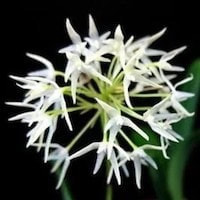WFR4 - Women's Fresh 4 - Surfing in Hawaii
|
Native Singaporean Orchid notes: Brassavola Nodosa
Brassavola Nodosa, also known as Lady of the Night, is a striking orchid known for its white to pale green flowers that emit a delightful fragrance in the evening. These flowers, typically 3½ to 6 inches in diameter, bloom profusely, creating a stunning sight in gardens. Easy to cultivate, this orchid thrives in various conditions and is cherished for its aromatic qualities, attributed to compounds like Cineole Medicinal, which gives off a scent reminiscent of citronellol and rose. Its popularity among orchid enthusiasts is due to both its beauty and captivating fragrance.
|
Therapeutic Orchid notes:
|
Bletilla striata
Bletilla striata, commonly known as Baiji, is a valuable orchid found in China, Korea, and Japan, with significant cultivation in regions like Guizhou. In Traditional Chinese Medicine (TCM), Baiji tubers are prepared by slicing or grinding them into a sticky paste when chewed or mixed with water. They are used to treat various conditions such as swelling, hemorrhages, and skin issues like burns and fissures. Baiji contains antimicrobial compounds like bibenzyls and dihydrophenanthrenes, effective against Gram-positive bacteria and fungi. It also shows promise in treating Clonorchiasis and as a carrier for gene therapy and cytotoxic agents in cancer treatment and liver embolization. |
|
Bulbophyllum laxiflorum Syn. Bulbophyllum radiatum
Bulbophyllum laxiflorum, known as Fusheshidou Lan or Yashe Lan in Chinese, is prized for its medicinal benefits in Southeast Asia. It is found in regions like southeastern China, Myanmar, Thailand, and Peninsular Malaysia. In traditional Chinese medicine, it is used to nourish Yin, benefit the lungs by clearing phlegm and stopping coughs with blood, and aid the stomach by improving appetite, aiding digestion, and soothing dry throat. These properties highlight its role in supporting respiratory and digestive health according to Chinese medicinal practices. |
|
Bulbophyllum odoratissimum
Bulbophyllum odoratissimum, known as Mihuashidou Lan, Xiaohaoshi Ganlan, Shimi, or Mitoushidou Lan in Chinese, and Thazin hmwe in Myanmar, is widely distributed across Asia. It blooms from April to September in countries like China, Myanmar, Bhutan, and Thailand, emitting a sweet fragrance. In traditional medicine, it is used for treating fractures externally with its powdered form mixed with wine, and for pulmonary tuberculosis and hernia pain when consumed with other herbs. Chemical compounds extracted from Bulbophyllum odoratissimum, such as phenanthraquinone and bulbophyllanthrone, exhibit cytotoxic effects against various human cancer cell lines, showing potential in cancer treatment. |
|
Crepidium acuminatum (D. Don.) Szlach. Syn. Malaxis acuminata D. Don., Microstylis wallichii Lindl.
Crepidium acuminatum, known as Jeevak in Hindi, Jivak in Tamil, Jivakam in Malayalam and Telugu, Jivakamu in Kannada, Jivaka in Sanskrit, and Lahsunia in the Kumaun Himalaya region, holds medicinal value in Ayurvedic practice. Its pseudobulbs are utilized to treat various ailments including bleeding disorders, fever, tuberculosis, rheumatism, and insect bites. It's a key ingredient in the renowned Ayurvedic tonic "Chyavanprash," known for enhancing overall health and preventing illnesses. C. acuminatum is incorporated into numerous Ayurvedic formulations and may be substituted with similar plants like Malaxis cylindrostachya and Pueraria tuberosa when unavailable. |
Other scent note
Pitahaya dragon fruit, aromatic herbs, banana leaf, Fig leaf, Ginseng, Green Pepper, Marjoram, Camphor, Fennel, Hops
Scentopia Library Reference ingredient
Patchouli - Check details at Scentopia's scent library
Download the guided mediation that works best with this Orchid fragrance oil
| women_fresh_essential_oil_orchi_00004.mp3 | |
| File Size: | 233191 kb |
| File Type: | mp3 |




